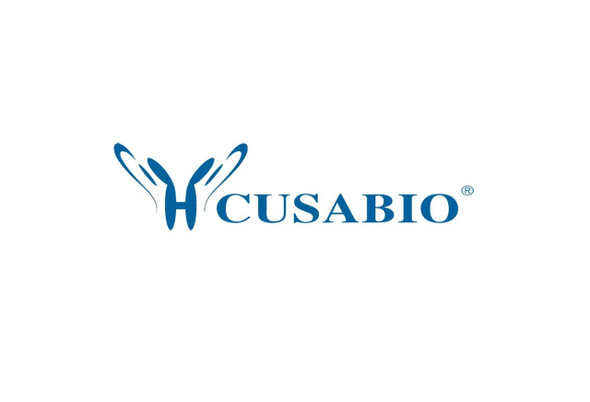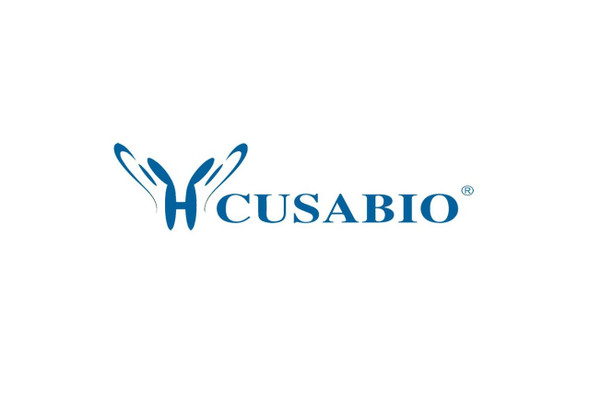Cusabio Human Recombinants
Recombinant Human Pyridoxal phosphate phosphatase (PDXP) | CSB-YP839328HU
- SKU:
- CSB-YP839328HU
- Availability:
- 25 - 35 Working Days
Description
Recombinant Human Pyridoxal phosphate phosphatase (PDXP) | CSB-YP839328HU | Cusabio
Alternative Name(s): Short name: PLP phosphatase Alternative name(s): Chronophin
Gene Names: PDXP
Research Areas: Signal Transduction
Organism: Homo sapiens (Human)
AA Sequence: MARCERLRGAALRDVLGRAQGVLFDCDGVLWNGERAVPGAPELLERLARAGKAALFVSNNSRRARPELALRFARLGFGGLRAEQLFSSALCAARLLRQRLPGPPDAPGAVFVLGGEGLRAELRAAGLRLAGDPSAGDGAAPRVRAVLVGYDEHFSFAKLREACAHLRDPECLLVATDRDPWHPLSDGSRTPGTGSLAAAVETASGRQALVVGKPSPYMFECITENFSIDPARTLMVGDRLETDILFGHRCGMTTVLTLTGVSRLEEAQAYLAAGQHDLVPHYYVESIADLTEGLED
Source: Yeast
Tag Info: N-terminal 6xHis-tagged
Expression Region: 1-296aa
Sequence Info: Full Length
MW: 33.7 kDa
Purity: Greater than 90% as determined by SDS-PAGE.
Relevance: Protein serine phosphatase that dephosphorylates 'Ser-3' in cofilin and probably also dephosphorylates phospho-serine residues in DSTN. Regulates cofilin-dependent actin cytoskeleton reorganization. Required for normal progress through mitosis and normal cytokinesis. Does not dephosphorylate phospho-threonines in LIMK1. Does not dephosphorylate peptides containing phospho-tyrosine. Pyridoxal phosphate phosphatase. Has some activity towards pyridoxal 5'-phosphate (PLP), pyridoxine 5'-phosphate (PMP) and pyridoxine 5'-phosphate (PNP), with a highest activity with PLP followed by PNP.
Reference: "Human pyridoxal phosphatase. Molecular cloning, functional expression, and tissue distribution."Jang Y.M., Kim D.W., Kang T.-C., Won M.H., Baek N.-I., Moon B.J., Choi S.Y., Kwon O.-S.J. Biol. Chem. 278:50040-50046(2003).
Storage: The shelf life is related to many factors, storage state, buffer ingredients, storage temperature and the stability of the protein itself. Generally, the shelf life of liquid form is 6 months at -20?/-80?. The shelf life of lyophilized form is 12 months at -20?/-80?.
Notes: Repeated freezing and thawing is not recommended. Store working aliquots at 4? for up to one week.
Function: Protein serine phosphatase that dephosphorylates 'Ser-3' in cofilin and probably also dephosphorylates phospho-serine residues in DSTN. Regulates cofilin-dependent actin cytoskeleton reorganization. Required for normal progress through mitosis and normal cytokinesis. Does not dephosphorylate phospho-threonines in LIMK1. Does not dephosphorylate peptides containing phospho-tyrosine
Involvement in disease:
Subcellular Location: Cytoplasm, cytosol, Cytoplasm, cytoskeleton, Cell projection, ruffle membrane, Peripheral membrane protein, Cytoplasmic side, Cell projection, lamellipodium membrane, Peripheral membrane protein, Cytoplasmic side, Cell membrane, Peripheral membrane protein, Cytoplasmic side
Protein Families: HAD-like hydrolase superfamily
Tissue Specificity: Ubiquitously expressed (at protein level) (PubMed:23223568). Highly expressed in all the regions of central nerve system except the spinal cord. Also expressed at high level in liver and testis. In fetus, it is weakly expressed in all organs except brain (PubMed:14522954, PubMed:15580268).
Paythway:
Form: Liquid or Lyophilized powder
Buffer: If the delivery form is liquid, the default storage buffer is Tris/PBS-based buffer, 5%-50% glycerol. If the delivery form is lyophilized powder, the buffer before lyophilization is Tris/PBS-based buffer, 6% Trehalose, pH 8.0.
Reconstitution: We recommend that this vial be briefly centrifuged prior to opening to bring the contents to the bottom. Please reconstitute protein in deionized sterile water to a concentration of 0.1-1.0 mg/mL.We recommend to add 5-50% of glycerol (final concentration) and aliquot for long-term storage at -20?/-80?. Our default final concentration of glycerol is 50%. Customers could use it as reference.
Uniprot ID: Q96GD0
HGNC Database Link: HGNC
UniGene Database Link: UniGene
KEGG Database Link: KEGG
STRING Database Link: STRING
OMIM Database Link: OMIM









